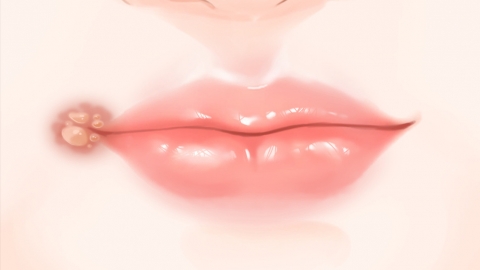How to treat scars from blisters at the corner of the mouth
Generally speaking, scars refer to cicatrix. Blisters at the corner of the mouth leaving scars may be caused by dietary irritation, physical friction, herpes simplex, angular cheilitis, contact dermatitis, and other factors. Treatments may include laser therapy, chemical peels, medication therapy, and other methods under the guidance of a physician. Specific explanations are as follows:

1. Dietary Irritation
Long-term consumption of spicy, greasy, or excessively hot foods may irritate the skin at the corner of the mouth, leading to local inflammation and subsequent blister formation. Improper management may result in scarring after the blisters rupture. It is advisable to maintain a bland diet, avoid excessive intake of irritants, and keep the skin at the corner of the mouth clean. Laser therapy may also be considered under the guidance of a physician, using different wavelengths of laser to treat the scar. The typical reference price for laser therapy ranges from 1,000 to 5,000 yuan per session, with visible improvement generally seen within 1-2 weeks. However, symptoms such as redness, swelling, and pain may occur.
2. Physical Friction
Frequent wiping of the corners of the mouth with tissues or friction from clothing may damage the skin barrier, causing inflammation and formation of blisters, which may leave scars. It is recommended to gently press the corners of the mouth with soft tissues to avoid excessive friction. Chemical peels using high-concentration fruit acids may also be considered under the guidance of a physician. This treatment promotes the shedding of the scar's old keratin layer, improving the appearance of the scar. The typical reference price for a chemical peel ranges from 500 to 2,000 yuan per session, with visible improvement generally seen within 3-5 days. However, symptoms such as stinging or burning may occur.
3. Herpes Simplex
Herpes simplex is caused by infection with the herpes simplex virus. When the virus affects the skin at the corner of the mouth, it may cause local blister formation. After rupture, the affected area may develop into an erosion surface, which tends to scar after healing. Symptoms such as fever and fatigue may also accompany the condition. Treatment options include acyclovir cream, penciclovir cream, acyclovir tablets, and other medications, used under the guidance of a physician.
4. Angular Cheilitis
Angular cheilitis is usually caused by bacterial, fungal, or viral infections. When the skin at the corner of the mouth becomes inflamed, it may manifest as redness and blisters, which tend to scar after rupture. Symptoms such as erosion and crusting at the corner of the mouth may also occur. Patients may follow medical advice to use medications such as erythromycin ointment, tetracycline hydrochloride ointment, and vitamin B2 tablets for treatment.
5. Contact Dermatitis
Contact dermatitis occurs when the skin at the corner of the mouth comes into contact with certain allergens, triggering an allergic reaction. Local symptoms may include redness and blisters, which may leave scars after rupture. Patients may also experience symptoms such as itching and a burning sensation. Treatment options include calamine lotion, clocortolone pivalate cream, cetirizine hydrochloride tablets, and other medications, used under the guidance of a physician.
In daily life, maintaining a balanced diet and consuming more fruits and vegetables rich in vitamins is recommended, while avoiding excessive intake of irritating foods.





